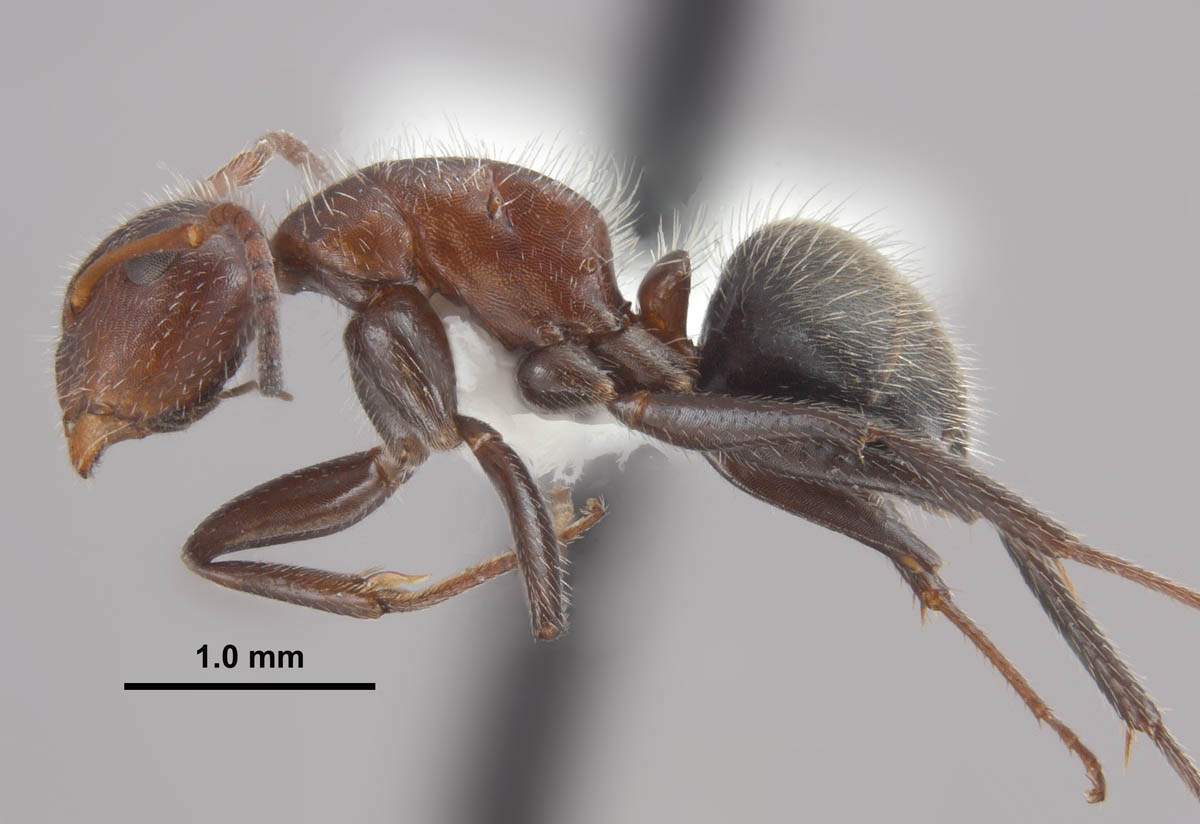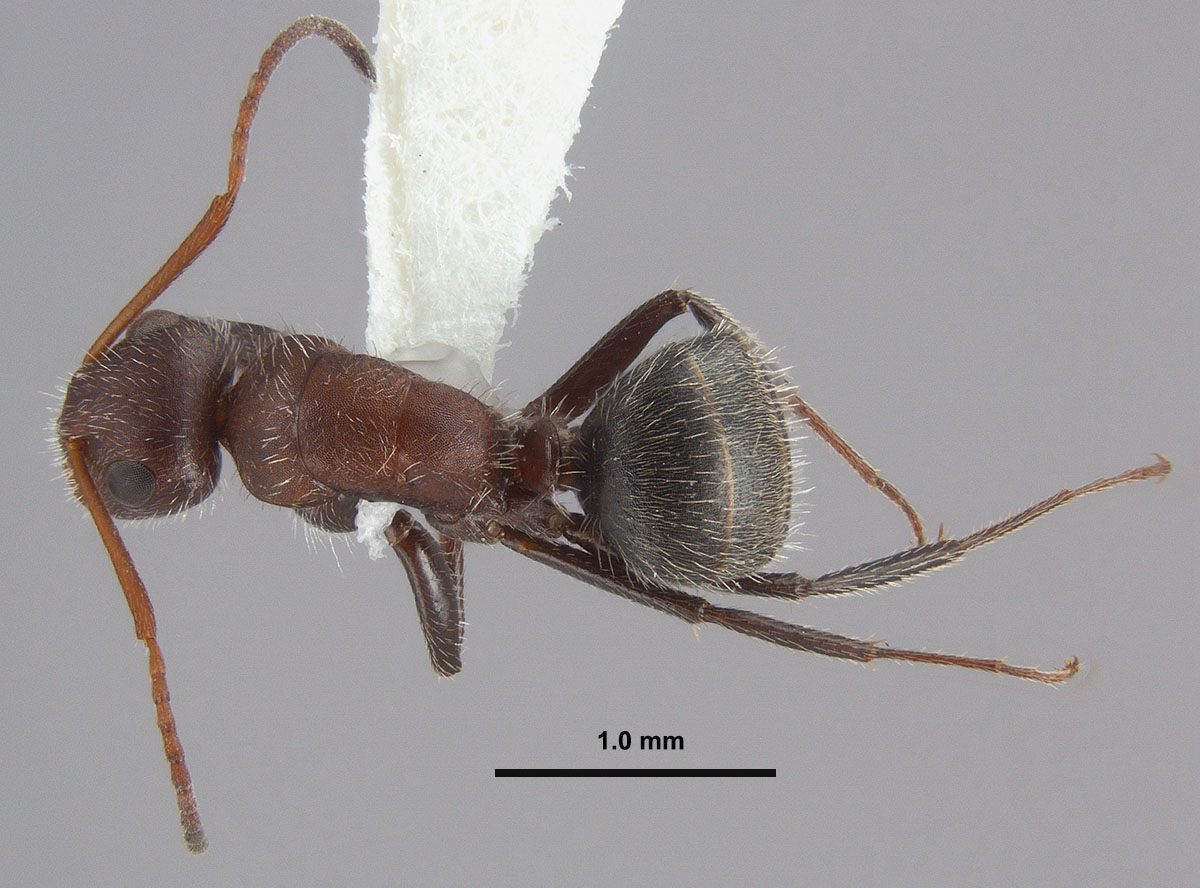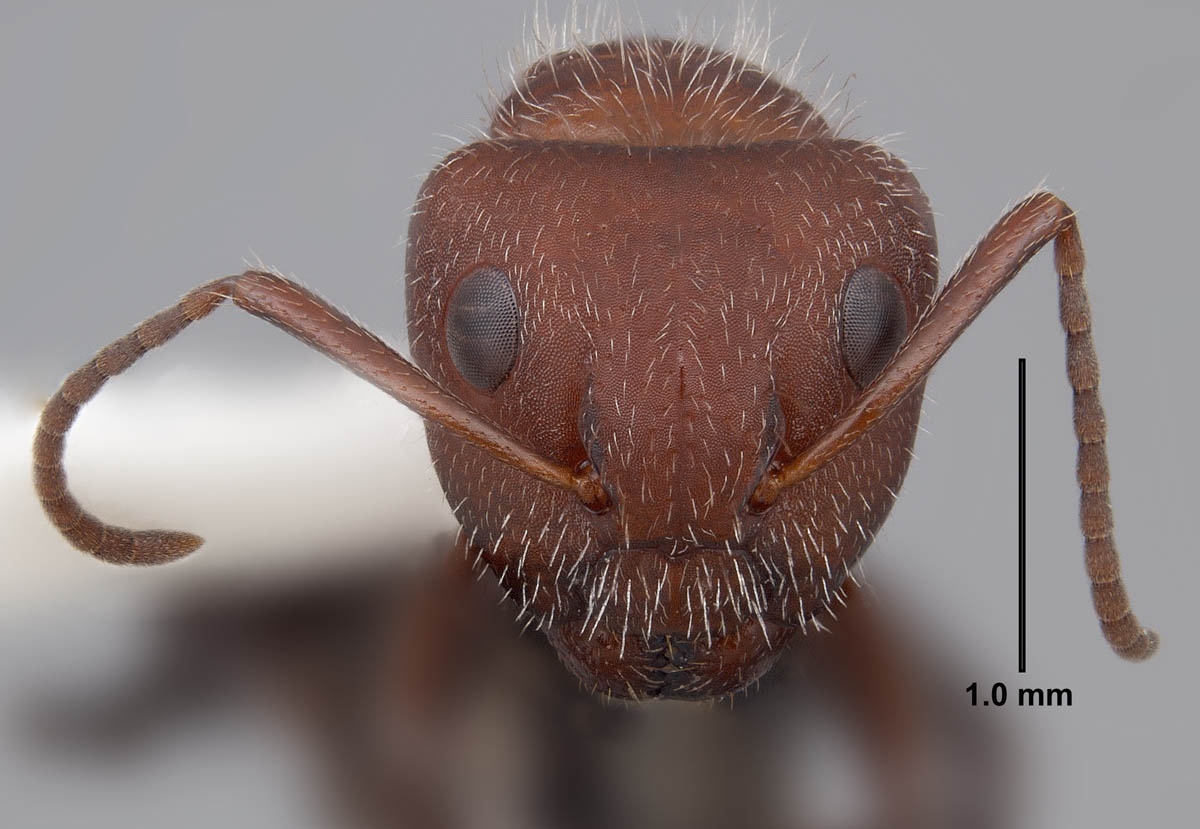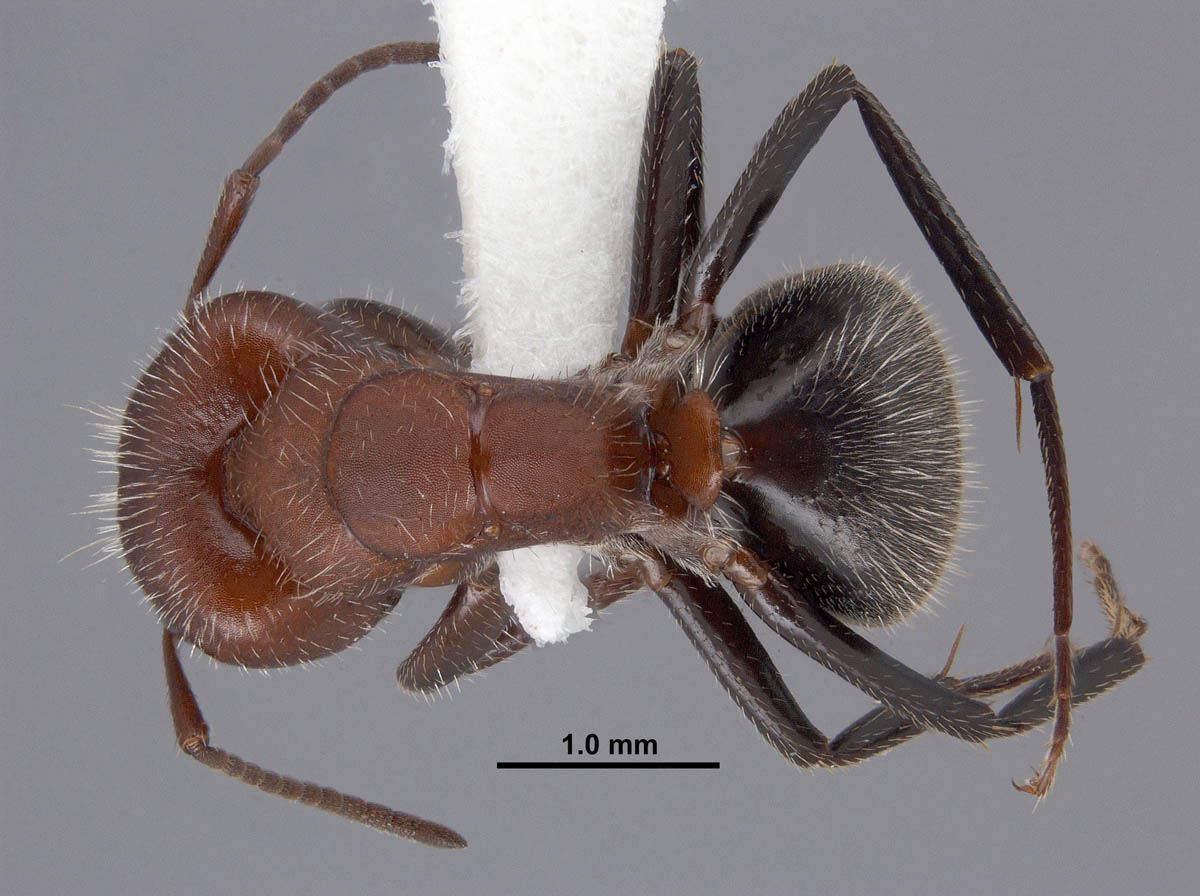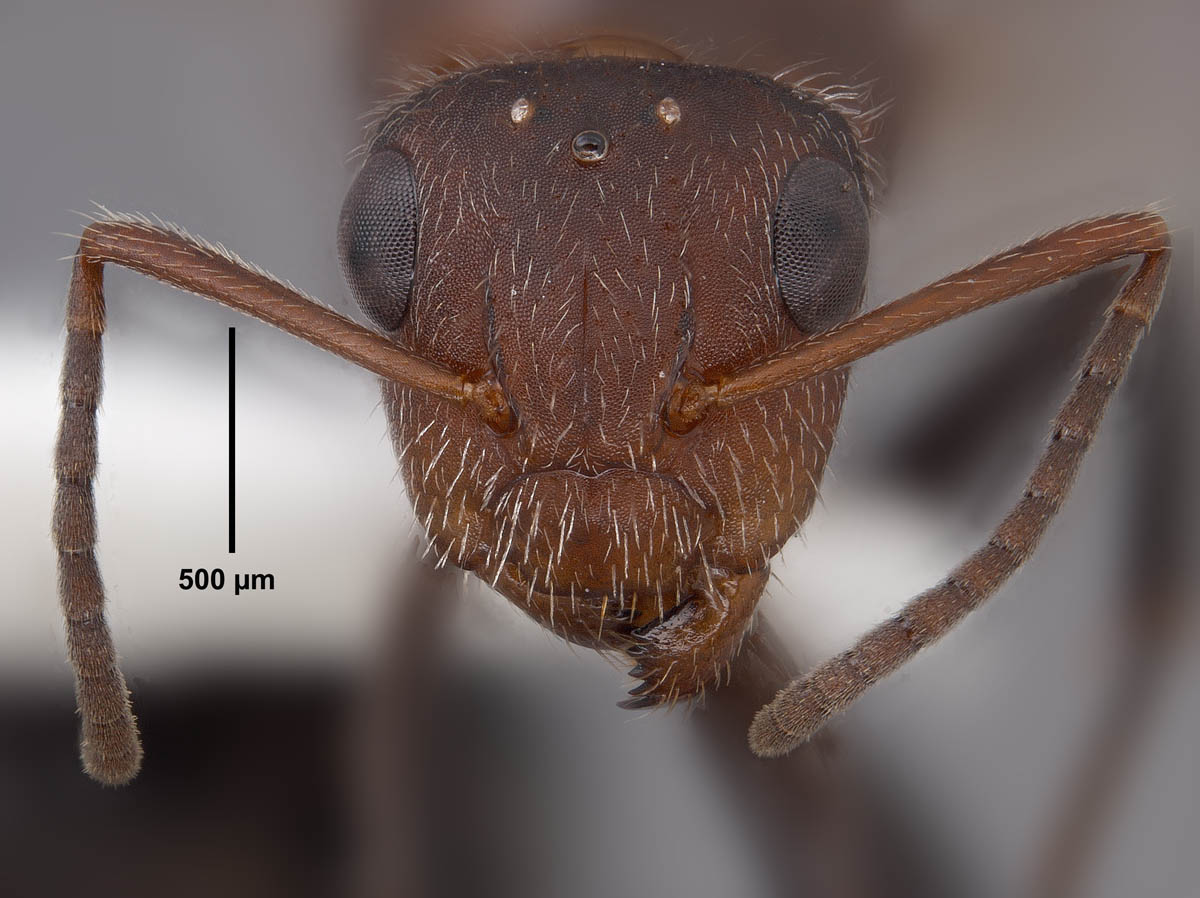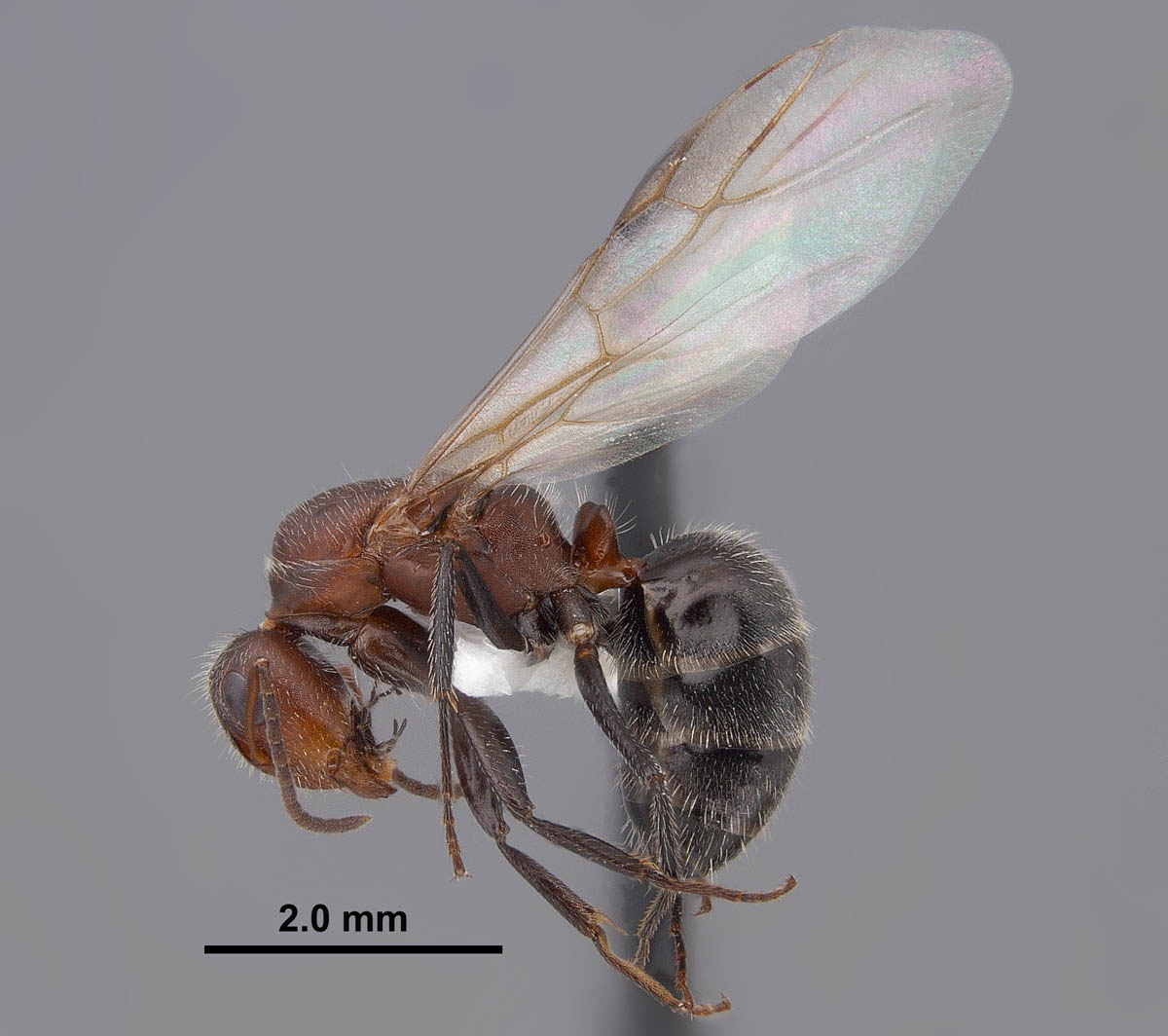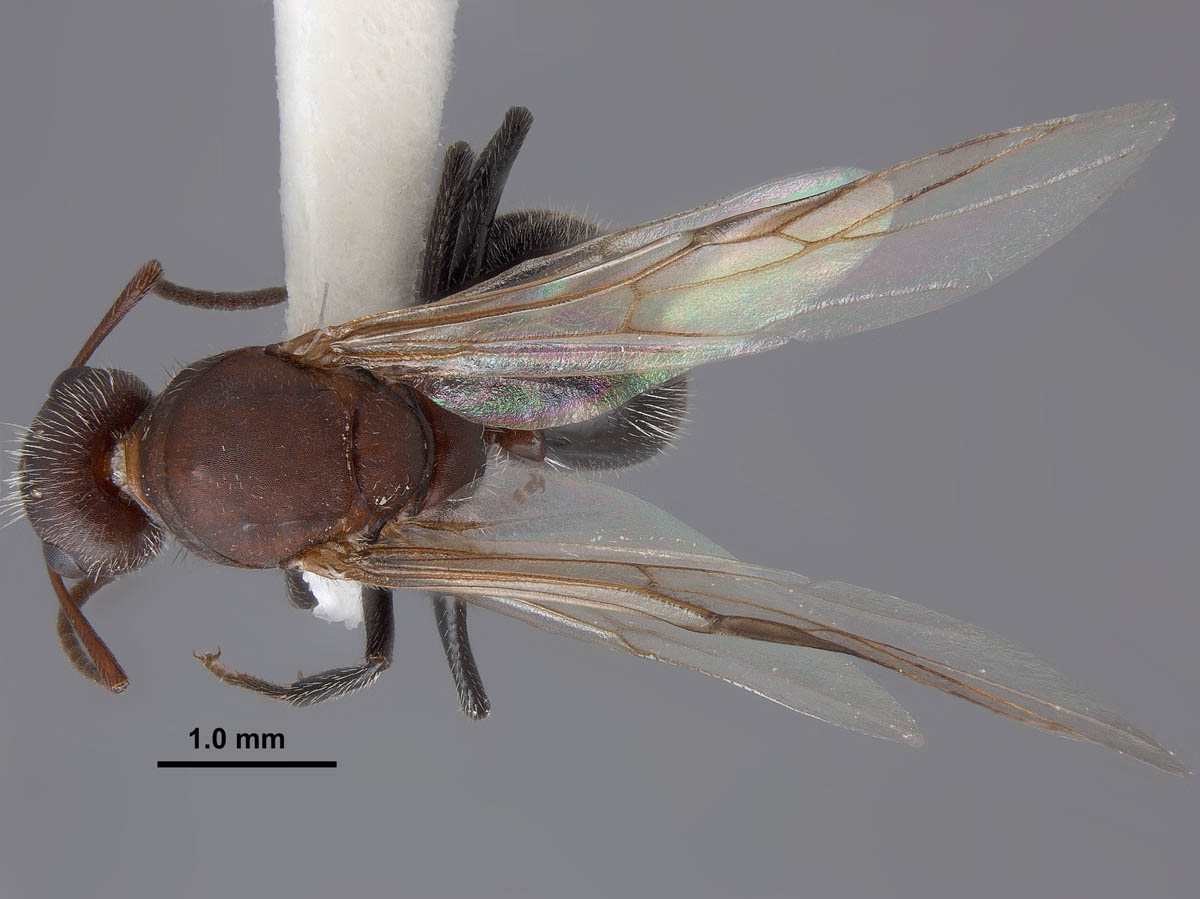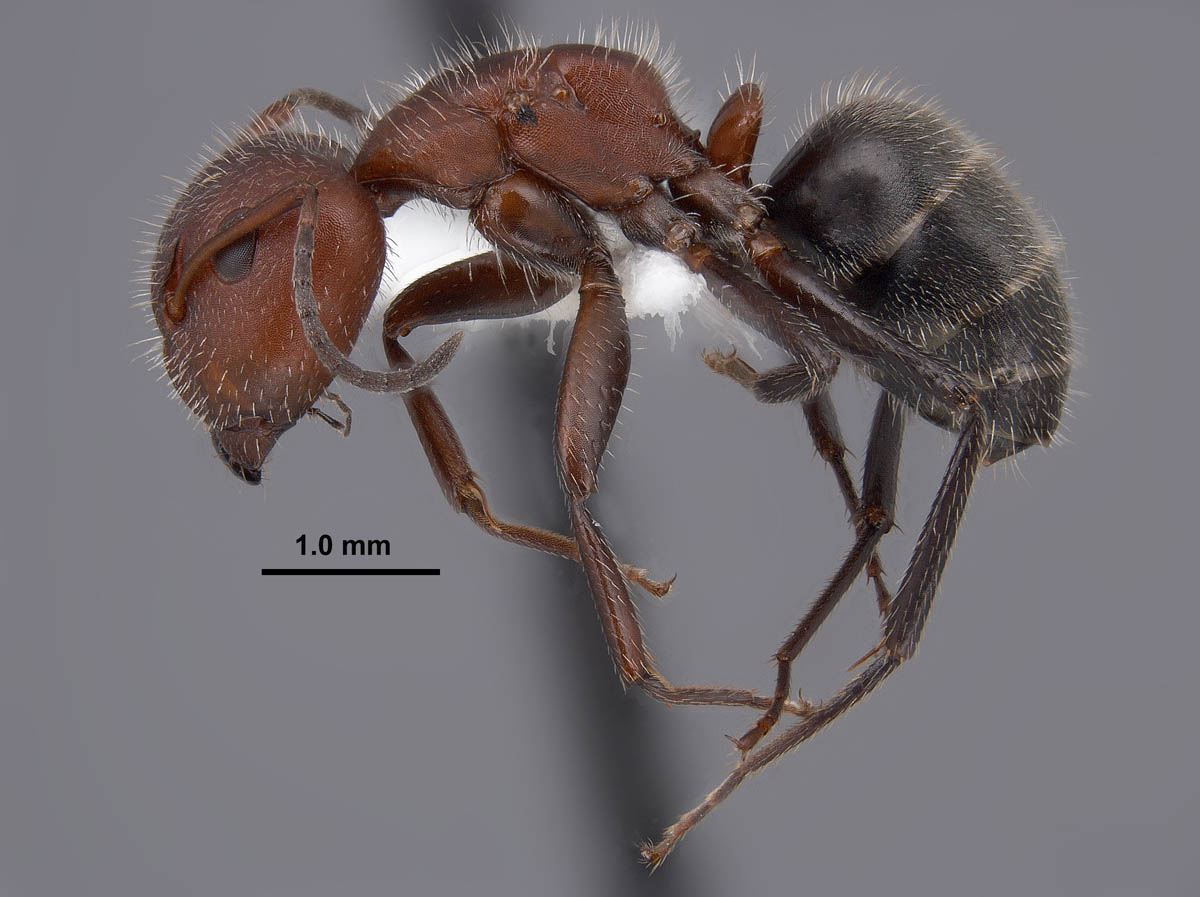Subfamily FORMICINAE Authors: Joe A. MacGown and Ryan J. Whitehouse |
||
Camponotus planatus, full face view of a minor worker (MS, Hancock Co.) (photo by Joe A. MacGown) |
Camponotus planatus, lateral view of a minor worker (MS, Hancock Co.) (photo by Joe A. MacGown)
|
Camponotus planatus, dorsal view of a minor worker (MS, Hancock Co.) (photo by Joe A. MacGown)
|
Camponotus planatus, full face view of a major worker (TX, Refugio Co.) (photo by Ryan J. Whitehouse and Joe A. MacGown) |
Camponotus planatus, lateral view of a major worker (TX, Refugio Co.) (photo by Ryan J. Whitehouse and Joe A. MacGown) |
Camponotus planatus, dorsal view of a major worker (TX, Refugio Co.) (photo by Ryan J. Whitehouse and Joe A. MacGown) |
Camponotus planatus, full face view of an alate queen (TX, Refugio Co.) (photo by Ryan J. Whitehouse and Joe A. MacGown) |
Camponotus planatus, lateral view of an alate queen (TX, Refugio Co.) (photo by Ryan J. Whitehouse and Joe A. MacGown) |
Camponotus planatus, dorsal view of an alate queen (TX, Refugio Co.) (photo by Ryan J. Whitehouse and Joe A. MacGown) |
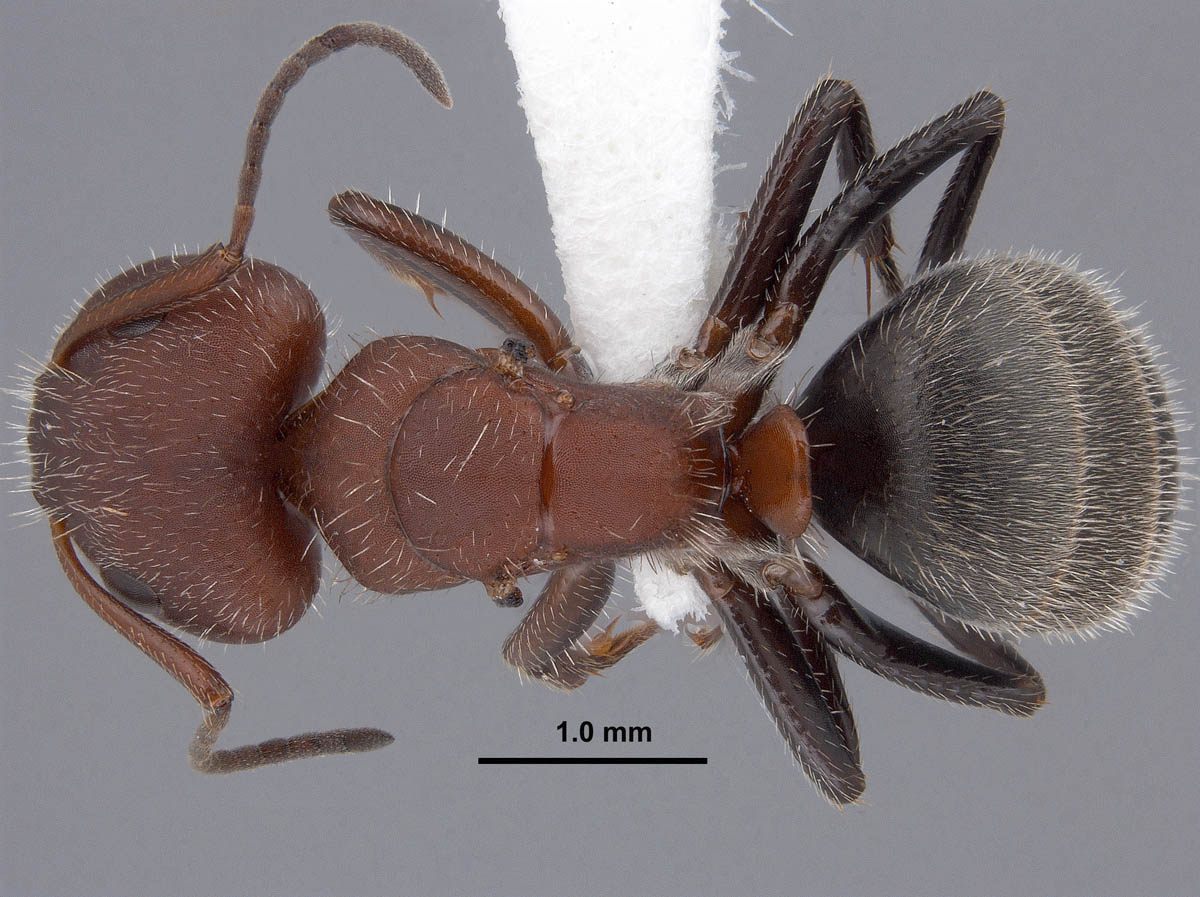 |
||
Camponotus planatus, full face view of a worker with some queen-like features (TX, Refugio Co.) (photo by Ryan J. Whitehouse and Joe A. MacGown) |
Camponotus planatus, lateral view of a worker with some queen-like features(TX, Refugio Co.) (photo by Ryan J. Whitehouse and Joe A. MacGown) |
Camponotus planatus, dorsal view of a worker with some queen-like features(TX, Refugio Co.) (photo by Ryan J. Whitehouse and Joe A. MacGown) |
Introduction Species in this genus are variable in size with workers ranging in size from 3.0 to 15 mm or more in length and queens (also referred to as females) of some species attaining a length of 19 mm or more. Many species are polymorphic. Workers have a 12-segmented antenna that lacks an apical club. Antennal fossae do not touch the posterior border of the clypeus. Ocelli are not present on the heads of workers. The workers of most species have an indistinct metanotal suture between the promesonotum and the propodeum, although this suture is present in C. sexguttatus and some members of the subgenus Colobopsis. Those species that lack the obvious and deep metanotal suture have the shape of the alitrunk in a smoothly curved arc (as seen in profile). Camponotus planatus Roger (Formicinae), the compact carpenter ant, is a small, bicolored species thought to be native to Central America and northern South America. This tropical species occurs in Cuba and from Mexico to Colombia, southern Texas, southern Florida, especially the Keys and Hancock County, Mississippi. Taxonomic History (Bolton 2016) Diagnosis Identification Queen: About the size of major worker: TL ≈ 5.0-6.0mm, HL 1.34mm, HW 1.19mm, SL 1.23mm, EL 0.46mm, MeSL 2.04mm (n= 5) (MEM specimens). Head slightly longer than wide, widest posteriorly; integument finely punctate, not shiny, with abundant, short and long, white setae present except on scapes, which lack erect setae; eyes large, located near posterior edge of head and extending past edges of head in full face view; three ocelli present; mandibles with five teeth; maxillary palps long and 6-segmented; scapes barely surpass the occipital border; antennae 12-segmented. Mesosomal dorsum enlarged, rounded flattened dorsally, with wing scars or wings present; integument finely punctate, not shiny; entire mesosomal dorsum with abundant, long, erect, whitish setae; pronotal humeral area well defined. Forewing with two submarginal cells; hindwing with more simple venation, basal cell present. Waist with single, erect petiolar node, widening apically (as seen from front to back); shiny, with numerous, long, white setae. Gaster with fine microsculpture, not shining, with dense, appressed, pubescence and abundant, long, semi erect, whitish setae; acidopore present. Male: (no specimens in MEM). Biology and Economic Importance Pest Status Distribution Neotropical Region: Colombia, Costa Rica, Cuba, Ecuador, El Salvador, Guadeloupe, Guatemala, Honduras, Mexico, Nicaragua, Panama, Venezuela (AntWeb.org). Nearctic Region: United States (AntWeb.org and MEM). U.S. Distribution: FL, MS, TX (Deyrup 2003 and MEM). Southeastern U.S. Distribution: FL, MS (Hancock Co.) (Deyrup 2003 and MEM). Acknowledgments Literature Cited Bolton, B. 2016. Bolton World Catalog Ants. Available online: http://www.antweb.org/world.jsp. Accessed 9 March 2016. Dalla Torre, K. W. 1893. Catalogus Hymenopterorum hucusque descriptorum systematicus et synonymicus. Vol. 7. Formicidae (Heterogyna). Leipzig: W. Engelmann, 289 pp. Deyrup, M. 2003. An updated list of Florida ants (Hymenoptera: Formicidae). Florida Entomologist 86: 43-48. Emery, C. 1890. Studii sulle formiche della fauna neotropica. Bullettino della Società Entomologica Italiana 22:38-80. Forel, A. 1879. Études myrmécologiques en 1879 (deuxième partie [1re partie en 1878]). Bulletin de la Société Vaudoise des Sciences Naturelles 16:53-128. Forel, A. 1899. Formicidae. Dummy reference. Biologia Centrali-Americana Hym 3:1-169. Forel, A. 1901. Variétés myrmécologiques. Annales de la Société Entomologique de Belgique 45:334-382. Forel, A. 1914. Le genre Camponotus Mayr et les genres voisins. Revue Suisse de Zoologie 22:257-276. Hansen, L. D., and J. H. Klotz. 2005. Carpenter ants of the United States and Canada. Cornell University Press. Ithaca, N. Y. i-xii+204 pp. MacGown, J. A. 2010. Camponotus planatus (Hymenoptera: Formicidae), an exotic carpenter ant found in Mississippi. Journal of the Mississippi Academy of Sciences 55: 187-18 Roger, J. 1863. Die neu aufgeführten Gattungen und Arten meines Formiciden-Verzeichnisses nebst Ergänzung einiger früher gegebenen Beschreibungen. Berliner Entomologische Zeitschrift 7:131-214. Smith, D. R. 1979. In Catalog of Hymenoptera in America north of Mexico. Smithsonian Institution Press, Washington D. C. Vol. 2, pp. 1323-1427. Wheeler, G. C. and J. Wheeler. 1953. The ant larvae of the subfamily Formicinae. Part II. Annals of the Entomological Society of America 46:175-217. Links AntWeb Fact sheet: http://entnemdept.ufl.edu/creatures/urban/ants/c_planatus.htm |
||



